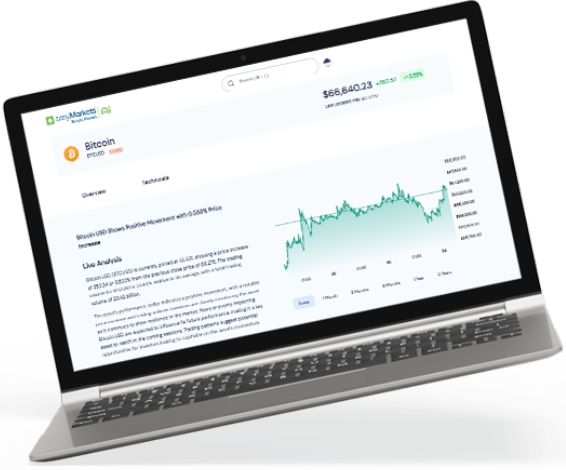Understanding Pairs Trading

Pairs Trading is a powerful market-neutral strategy that allows traders to profit from temporary dislocations between two historically correlated assets. Originally developed in the 1980s by Morgan Stanley quantitative analyst Nunzio Tartaglia, this strategy was once the exclusive domain of hedge funds and institutions. But thanks to the rise of online trading platforms and real-time data access, it is now a widely accessible tactic for retail traders looking for a more sophisticated way to manage risk and find opportunities.
In this guide, we’ll break down how Pairs Trading works, its key advantages and potential pitfalls, and how to apply it across different asset classes, including stocks, forex, crypto, and CFDs.
What is Pairs Trading?
Pairs Trading is a form of statistical arbitrage that focuses on the relative performance of two closely linked assets. It's also considered a type of correlation trading, as it relies on identifying pairs of instruments that typically move together and exploiting deviations in their price relationship.
A Pairs Trader takes advantage of this by going long on the undervalued asset and short on the overvalued one, betting that the spread between them will revert to its historical average.
Key Concepts:
- • Strategy relies on mean reversion
- • Works in trending or sideways markets
- • Commonly used in stock, forex, and crypto markets

How does Pairs Trading work?
 Identify a pair:
Identify a pair:Select two assets with a strong historical correlation, often in the same sector or industry
 Track the spread:
Track the spread:Monitor the price ratio or spread between the two. Tools like moving averages and z-scores can help
 Spot a divergence:
Spot a divergence:Wait for the spread to deviate significantly, signaling a potential dislocation
 Enter the trade:
Enter the trade:Long the lagging asset and short the outperformer
 Exit the trade:
Exit the trade:Close both positions once the spread returns to its historical norm
This strategy doesn’t require a bullish or bearish view on the market overall – it just requires the assets to return to their usual relationship. It’s a classic example of a Mean Reversion Strategy, where the assumption is that prices will eventually revert to their historical average.
Real-world example: Apple vs. Microsoft
Let’s say Apple (AAPL) and Microsoft (MSFT) have historically tracked each other closely due to their dominance in the tech sector, similar product cycles, and overlapping investor sentiment. Their price movements tend to follow a consistent pattern, maintaining a relatively stable spread over time.
Now imagine Apple surges after announcing a highly anticipated new product, while Microsoft’s stock remains flat. This creates a divergence in the price relationship between the two, a potential signal for a Pairs Trade. In this case, you would:
- • Short Apple anticipating its price will revert or slow down after the hype fades.
- • Long Microsoft expecting its price to catch up as market momentum shifts or investors rotate capital back into it.

If the price spread between the two normalizes, the trade generates a profit, regardless of whether the overall market went up or down during that time.
Pairs Trading across markets
Pairs Trading isn't confined to one type of asset, but a flexible strategy that can be adapted to multiple markets. Each asset class comes with its own nuances, but the underlying logic remains the same: find two correlated instruments, wait for a temporary divergence, and trade the expected reconvergence.
Crypto

Pairs Trading isn't confined to one type of asset, but a flexible strategy that can be adapted to multiple markets. Each asset class comes with its own nuances, but the underlying logic remains the same: find two correlated instruments, wait for a temporary divergence, and trade the expected reconvergence.
Stocks

In the stock market, Pairs Trading is typically applied to companies in the same sector or industry. Examples include Visa and Mastercard, Ford and GM, or Coca-Cola and Pepsi. Because equities are influenced by similar macroeconomic drivers, competitive pressures, and seasonal factors, they often move in tandem, making them ideal for this strategy. Access to robust historical data and company-specific financials also supports more informed pair selection.
Pair trading stock list
If you're looking to get started with stock-based Pairs Trading, having a go-to list of historically correlated stock pairs can save you time and improve your trade quality. These pairs often consist of companies operating in the same industry, exposed to similar macroeconomic conditions, or driven by comparable investor sentiment. Traders monitor these relationships for price divergence, then trade the spread with the expectation that the prices will revert to their typical alignment.
Below are some of the most commonly traded stock pairs that exhibit strong historical correlation:
| Pair Trading Stock List Example | |
|---|---|
| Coca-Cola (KO) | PepsiCo (PEP) |
| Royal Dutch Shell (RDS.A) | BP (BP) |
| Walmart (WMT) | Costco (COST) |
| McDonald's (MCD) | Yum! Brands (YUM) |
| Amazon (AMZN) | Alibaba (BABA) |
| Visa (V) | Mastercard (MA) |
| Exxon Mobil (XOM) | Chevron (CVX) |
| Johnson & Johnson (JNJ) | Procter & Gamble (PG) |
| Ford (F) | General Motors (GM) |
These pairings can be a great starting point for identifying Pairs Trading opportunities. Just make sure to confirm their current correlation and evaluate each setup with sound technical and statistical analysis.
Forex

When it comes to Pairs Trading in the forex market, some currency pairs are favoured more than others due to their liquidity, predictability, and the consistency of their trends. Among the most popular pairs are:
- • EUR/USD – This is the most traded currency pair in the world. Its deep liquidity and tight spreads make it a top choice for Pairs Traders, especially since its trends are relatively stable and driven by major economic data.
- • GBP/USD – Known as 'Cable,' this pair is also popular, albeit more volatile than EUR/USD. The increased price swings can present greater opportunities, and risks, for Pairs Traders.
- • USD/JPY and AUD/USD – These pairs are frequently used due to their clear technical patterns and strong market trends, which help traders spot divergence opportunities more easily.
Pairs Traders in forex typically look for two major pairs that tend to move in tandem and monitor them for temporary dislocations. Thanks to the forex market's 24/5 operation and high trade volume, it offers ample opportunities for well-timed trades. Currency pairs are a natural fit for Pairs Trading due to their high liquidity, transparency, and data availability.
CFDs

Contracts for Difference (CFDs) open the door to Pairs Trading across nearly any market – from commodities and indices to bonds and even cross-asset pairings. Since you don’t own the underlying asset, CFDs offer the flexibility to go long and short easily. However, leverage increases the risk. It's vital to apply sound risk management when trading CFDs to avoid big losses during adverse price moves.
Key benefits of Pairs Trading
 Market neutral:
Market neutral:Profit regardless of overall market direction, which is ideal in uncertain conditions
 Lower systematic risk:
Lower systematic risk:Long and short positions help balance exposure to broad market movements
 Effective in volatile markets:
Effective in volatile markets:Temporary dislocations become more frequent in volatile environments
 Diversification tool:
Diversification tool:Useful for hedging directional trades or balancing a broader portfolio
 Applicable across asset classes:
Applicable across asset classes:Can be used in equities, currencies, commodities, crypto, and CFDs
Risks and limitations
 Correlation breakdown
Correlation breakdownWhen two assets that once moved together no longer do, due to changes in fundamentals, market structure, or sentiment. A classic example is the well-known pairing of Coke and Pepsi. Despite being a textbook duo often referred to in trading courses, a Pairs Trading strategy with these two has suffered losses for several years. It's essential to remember that past performance doesn't ensure future returns
 Correlation breakdown
Correlation breakdownDiverging fundamentals A shift in company performance or outlook may permanently alter the relationship
 Delays in mean reversion
Delays in mean reversionMarkets can remain irrational longer than expected, and spreads may widen before they converge
 Complex execution
Complex executionRequires real-time data analysis, statistical tools, and discipline to follow the strategy
 Costs and slippage
Costs and slippageFrequent entries and exits can result in higher transaction costs and reduced profit margins
A good Pairs Trader monitors their pairs closely and is ready to adjust when correlations weaken or vanish.
How to measure correlation
To identify viable trading pairs, traders use statistical tools like the Pearson correlation coefficient, which measures the linear relationship between two assets:
- • +1.0: Perfect positive correlation
- • 0.0: No correlation
- • -1.0: Perfect inverse correlation
For Pairs Trading, correlations close to +1.0 are typically preferred. However, traders also consider cointegration and z-score analysis to improve timing and confirm the quality of the pair.
Useful tools for Pairs Traders
 Moving Averages
Moving Averages Help track price trends and deviations
 Z-Score
Z-Score Measures how far the current spread deviates from its mean in standard deviations
 Correlation Matrix
Correlation Matrix Visualizes asset relationships to spot strong pair candidates
 Charting platforms & trading software
Charting platforms & trading software Platforms like TradingView or MetaTrader allow for customizable spread charts and alerts
Conclusion
Pairs Trading is one of the few strategies that can thrive in any market environment. Whether markets are trending or fast paced, this approach focuses on the relative movement between assets, making it especially useful when broader direction is unclear.
It requires effort: correlation analysis, proper execution, and close monitoring. But for those who master it, Pairs Trading provides a unique way to pursue consistent, risk-adjusted returns while avoiding overexposure to market swings.

Pairs Trading is a powerful market-neutral strategy that allows traders to profit from temporary dislocations between two historically correlated assets. Originally developed in the 1980s by Morgan Stanley quantitative analyst Nunzio Tartaglia, this strategy was once the exclusive domain of hedge funds and institutions. But thanks to the rise of online trading platforms and real-time data access, it is now a widely accessible tactic for retail traders looking for a more sophisticated way to manage risk and find opportunities.
In this guide, we’ll break down how Pairs Trading works, its key advantages and potential pitfalls, and how to apply it across different asset classes, including stocks, forex, crypto, and CFDs.
FAQs
Pairs Trading can be suitable for beginners, but it depends on the individual's understanding of the market, patience, and ability to analyze and understand complex financial data. It's always recommended to thoroughly research and possibly consult a financial advisor before starting any new trading strategy.
Yes, Pairs Trading is often considered a form of arbitrage. Specifically, it is known as statistical arbitrage. Traders aim to profit from the price difference between two correlated securities when the relationship between their prices diverges and then converges again.
Yes, there are several types of Pairs Trading strategies. These may include Statistical Arbitrage, which involves making trading decisions based on statistical analyses; and Relative Value, where trades are made based on the relative value of similar securities. The best approach can depend on a variety of factors including your trading experience, risk tolerance, and market conditions.
Look for assets with strong historical correlation, similar market drivers, and enough liquidity. Confirm whether the spread tends to return to its average level over time.
Absolutely. Volatility often creates the price dislocations that make this strategy work. Just be sure to manage your risk carefully.














